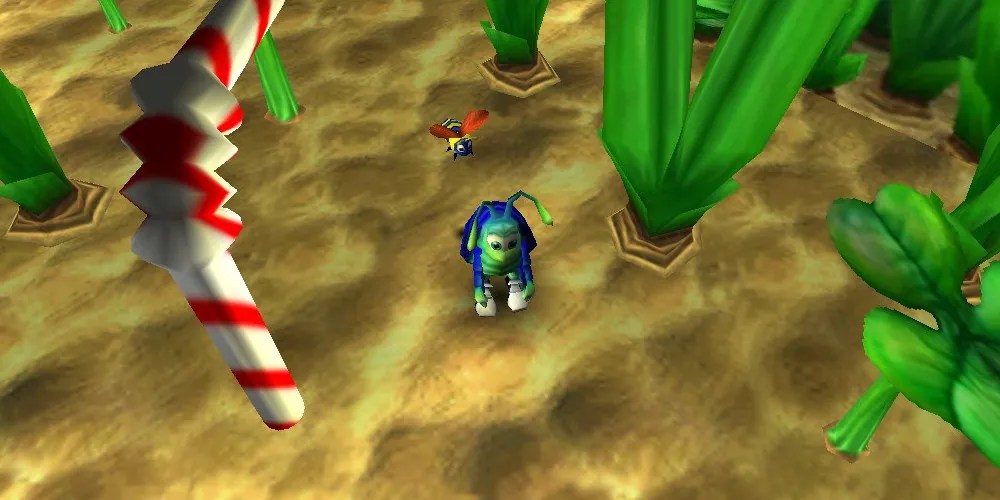Summary
Many gamers consider themselves members of the PC master race. The technology of personal computers allows them to do things that console gamers could only envy, until just recently. Apple’s Macintosh systems, however, are mocked in the gaming community for their lack of variety of titles.
There was a time, however, when Macs gave PCs a run for their money. Such titles included pack-ins, ports, and Mac-exclusive games that were precursors to hit franchises of today. Many of these games are now accessible on modern systems so that anyone can sample Macintosh history. Here are some of Apple computers’ greatest hits.

Mighty Mikewas initially published asPower Petein 1995 for Apple’s Macintosh Performa computers. The premise heavily echoes that of Disney’s and Pixar’sToy Story. The toys in a store come to life at night, and a bunch of bunny toys wander off and put themselves in danger. It is up to Power Pete to find and rescue these toys.
The gameplay is a classictop-down shooter. Power Pete runs around areas firing at enemies, collecting power-ups, and saving rabbits around the game map. This requires fast reflexes, as enemies can come from every direction. Upon dying, his head and limbs pop out of his torso, loosely connected by springs.

Today, the undisputed champion of Western video games is Rockstar’sRed Dead Redemption 2. It has a fully realized open world with plenty to do, as well asa well-written story. However, one can easily find the DNA of theRed Deadfranchise in a humble point-and-click adventure game calledDust: A Tale of the Wired West.
Dust follows the stranger, a man who finds refuge from his troubles in the lonely town of Diamondback, New Mexico, which hosts an eclectic cast of characters. The title has several activities between story beats, including talking with the townsfolk, practicing aim on the shooting range, and playing Poker at the saloon. Mac owners will remember fondly the adventures they had in this title.

WhileDuke Nukemtoday has fallen on hard times, he was oncethe King of first-person shooters. His big 3D adventure premiered on the PC in January 1996, and he would come to the Macintosh in June of the following year.
The Duke was the guy every adolescent boy wanted to be. He destroyed violent alien pigs, had a chiseled body, and was full of confidence. He had a way with the ladies as well, being able to generously tip themfor their time in nightclubs. Duke Nukem’s original voice actor, Jon St. John, is still making the rounds at conventions today.

Will Wright and Maxis Games gave the worlda crash course in city managementand municipal government withSimCity. It offered aspiring mayors the chance to build the city of their dreams, all while learning about power grids and taxes.
SimCitymade its way to the Macintosh in 1989. The game’s micromanagement is satisfyingly addicting. If a classroom had a computer in it, this game was a great excuse to play games in school and learn something as well. Or, one could unleash a kaiju on the populace.

Bungie is probably most well known for theHalofranchise, which became the original Xbox’s killer app. A time existed, though, when Bungie was firmly in Macintosh’s corner. The company developed the Mac platform’ssci-fi shooter trilogy,Marathon.
The first title saw the protagonist boarding a ship invaded by a hostile alien force. It is a veryDoom-like experience, running around corridors and blasting enemies. The action was strung together by a science fiction narrative involving a rogue artificial intelligence. Bungie made the games available for free, and thanks to the open-source project Aleph One, they are playable on modern computers.

Bugdomcame out less than a year after Pixar’s second animated feature,A Bug’s Life. It stars Rollie McFly,a pill bugwho is fighting a colony of invading fire ants to restore peace to the insect land.
This game was a pack-in for Apple’s early iMac models with Mac OS 9. It is a charming, simple platforming experience. Rollie runs around environments, fends off enemies, and rescues abducted ladybugs. Thanks to the work of Jorio, Bugdom is now available on modern Mac, Linux, and Windows platforms.

Yes,Halois Microsoft’s property. However, the first entry in the franchise would eventually make its way to Macintosh platforms in 2003. The fact is, though, the first glimpse the world got of Halo was at MacWorld 1999, and presented by Steve Jobs. The early build of the title showed off none of the first-person gameplay that Halo is known for today. In fact, Bungie started developing the game as an RTS, then as a third-person shooter.
Halonot only marked a major turning point for Bungie but also the history of Mac gaming. Bungie was a Mac-focused game developer, and the studio was developing this game when Microsoft bought it out. It was a huge loss for the Apple faithful.